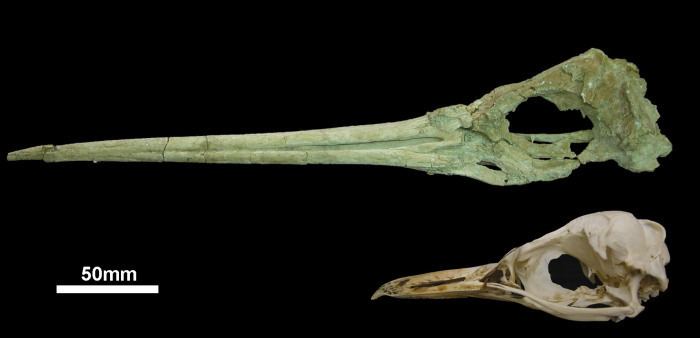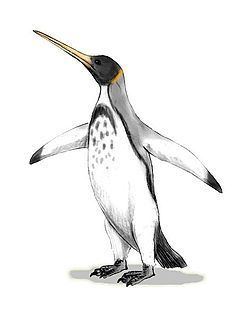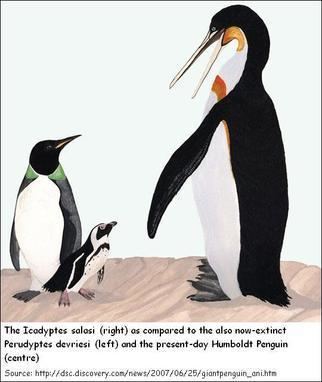Subfamily †Palaeëudyptinae Scientific name Icadyptes salasi Higher classification Icadyptes Order Penguin | Family Spheniscidae Genus †Icadyptes Rank Species | |
 | ||
Similar Penguin, Anthropornis, Palaeeudyptinae, Pachydyptes, Inkayacu | ||
Icadyptes salasi is an extinct giant penguin species from the Late Eocene period, in the tropics of South America. "Ica" for the Peruvian region where it was found, "dyptes" from the Greek word for diver, and "salasi" for Rodolfo Salas, a noted Peruvian paleontologist.
Contents

Description

Standing 1.5 metres (5 ft) tall, the penguin was much larger than any of its modern-day cousins, yet Icadyptes salasi is merely the third largest penguin ever described. It had an exceptionally long spear-like beak resembling that of a heron. The researchers who discovered the penguins believe the long, pointed beaks to be the likely ancestral shape for all penguins.
History

The fossilised remains of the penguin, which lived 36 million years ago, were found in the coastal desert of Peru by the team of North Carolina State University palaeontologist Dr. Julia Clarke, assistant professor of marine, earth and atmospheric sciences. Its well-preserved fossil skeleton was found on the southern coast of Peru together with an early Eocene species Perudyptes devriesi (comparable in size to the living King penguin), and the remains of three other previously undescribed penguin species, all of which seem to have preferred the tropics over colder latitudes. Perudyptes devriesi is named after the country, and Thomas DeVries, a Vashon Island High School science teacher who has long worked in Peru.
Evolution

Icadyptes salasi and Perudyptes devriesi appear to have flourished at warmer latitudes at a time when world temperatures were at their warmest over the past 65 million years. Only a few modern-day penguins, such as the African and Galapagos penguins prefer such a balmy climate.

The discovery of the fossils has caused a re-evaluation of penguin evolution and expansion. Previously, scientists believed that penguins evolved near the poles in Antarctica and New Zealand, and moved closer to the equator around 10 million years ago. Since Icadyptes salasi lived in Peru during a period of great warmth, penguins must have adapted to warm climates around 30 million years earlier than previously believed.
